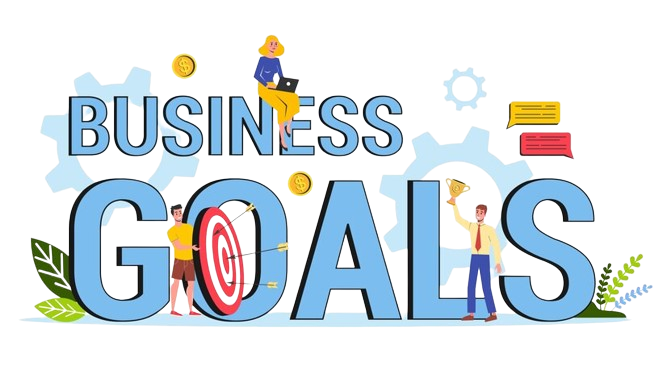
In the dynamic landscape of enterprise, wherein markets are ever-evolving, and client selections are considerable, pricing techniques play a pivotal role in determining the success of an organization. Among the array of pricing tactics, aggressive pricing stands proud as a strategy deeply intertwined with market forces and client behavior’s. In this complete exploration, we delve into the arena of aggressive pricing, unravelling its definition, understanding its blessings, and addressing the concerns that can arise. As companies attempt to survive but thrive in fiercely aggressive environments no longer effectively, the art and technology of pricing become more crucial. Join us in this adventure as we uncover the intricacies of competitive pricing, from its definition to the techniques which could make it a powerful tool for market fulfilment.
Competitive Pricing Definition
Competitive pricing is a strategic method wherein an enterprise sets its products or services expenses primarily based on the prevailing prices within the aggressive marketplace. Unlike price-plus pricing, which is predicated on the inner manufacturing charges and desired earnings margins, aggressive pricing hinges on outside market dynamics. In essence, it involves figuring out the superior fee factor via intently monitoring and aligning with the costs charged via enterprise competitors for comparable services.
This pricing approach acknowledges the impact on supply and calls for patron expectations and competitor behaviour at the pricing structure. Competitive pricing aims to put a product or service at a level that is appealing to clients and aggressive enough to capture a good-sized share of the marketplace. This method calls for an eager knowledge of the market landscape, persistent tracking of competitors’ pricing techniques, and the potential to evolve unexpectedly to convert market conditions.
Competitive pricing does now not always mean setting the lowest fees within the market. Instead, it aims to strike stability between offering cost to customers and ensuring that the enterprise stays financially feasible. Successful implementation of competitive pricing needs a strategic mindset, information-pushed selection-making, and a commitment to staying responsive in ever-fluctuating business surroundings.
Benefits of Competitive Pricing
Competitive pricing is a dynamic method that gives various advantages to organizations aiming to navigate the competitive market effectively. By aligning with triumphing marketplace prices and responding to purchaser expectancies, companies can liberate numerous blessings:
1. Customer Attraction
- Price Sensitivity: Competitive pricing appeals to fee-aware consumers, taking pictures of the eye of folks who prioritize affordability.
- Market Entry: Lower prices can act as a gateway for organizations getting into a marketplace, supporting them in setting up a foothold and attracting a client base.
2. Market Share Expansion
- Competitive Edge: By imparting fees in line with or decreasing than competition, a commercial enterprise can gain a competitive edge and growth its marketplace percentage.
- Consumer Switching: Customers may transfer from competitors attracted by extra favourable charges, contributing to marketplace proportion growth.
3. Brand Perception
- Value Proposition: Competitive pricing can enhance a logo’s belief using highlighting the price it gives when it comes to its pricing.
- Mass Appeal: Brands adopting competitive pricing may attract a broader audience, fostering a tremendous picture amongst various client segments.
4. Flexibility and Adaptability
- Market Dynamics: Competitive pricing permits corporations to evolve rapidly to modifications in marketplace situations, ensuring pricing stays applicable and competitive.
- Responsive Strategy: The flexibility of this approach allows groups to adjust fees based totally on elements together with seasonality, demand fluctuations, and competitor moves.
5. Customer Loyalty
- Perceived Value: Customers frequently companion competitive prices with good costs for cash, fostering loyalty and repeat enterprise.
- Positive Experience: Fair and competitive pricing contributes to a high-quality consumer experience, improving the likelihood of consumer retention.
6. Profit Maximization
- Volume Sales: Competitive pricing also stimulates better income volumes, compensating for decreased income margins in step with the unit.
- Economies of Scale: Increased sales can cause economies of scale, reducing manufacturing costs and contributing to standard profitability.
7. Market Positioning
- Strategic Positioning: Competitive pricing lets groups place themselves strategically within the marketplace, whether as a cost chief or a provider of lower-priced yet remarkable merchandise/services.
- Market Perception: It shapes a business’s perception within its enterprise, influencing patron perceptions and choices.
Concerns with Competitive Pricing
While aggressive pricing gives numerous blessings, companies must navigate potential challenges to ensure long-term sustainability and profitability. Here are a few issues associated with competitive pricing strategies
1. Profit Margins
- Margin Erosion: Aggressive competitive pricing may additionally lead to decreased income margins, impacting the financial health of the commercial enterprise.
- Sustainable Profitability: Striking a balance between competitiveness and retaining healthful earnings margins is essential for long-time period viability.
2. Brand Image
- Perceived Value: Excessive reliance on competitive pricing could devalue the emblem, creating perceptions of decreasing or compromising prices.
- Brand Integrity: Balancing charge competitiveness with maintaining emblem integrity is vital to avoid capability long-time period damage.
3. Long-term Viability
- Sustainability: Businesses must examine the lengthy-term sustainability of their competitive pricing techniques, considering factors like evolving marketplace dynamics and changing consumer behaviours.
- Adaptability: Continuous edition ensures that pricing strategies remain relevant and powerful over time.
4. Market Saturation
- Intense Competition: In surprisingly aggressive markets, continually reducing expenses may cause diminishing returns as competitors respond quickly.
- Differentiation Challenges: Maintaining differentiation will become hard whilst competitors race to the bottom based on price.
5. Customer Expectations
- Quality Perception: Extremely low charges may create scepticism amongst clients about the pleasantness of the product or service.
- Meeting Expectations: Managing consumer expectancies regarding each fee and exceptional is important for lengthy periods of pleasure and loyalty.
Strategies for Successful Competitive Pricing
Navigating the complex panorama of competitive pricing calls for a strategic technique that goes beyond surely decreasing costs. Successful implementation includes a combination of marketplace insight, customer know-how, and flexibility. Here are key strategies to make certain that competitive pricing contributes to the long-term success of a business:
1. Market Research
- Comprehensive Analysis: Conduct thorough market studies to apprehend competitors, customer preferences, and standard marketplace dynamics.
- Identify Trends: Stay current on marketplace developments, rising competition, and shifts in consumer behaviour.
2. Value-delivered Services
- Enhance Value Perception: Offer price-introduced offerings or unique promoting propositions along with aggressive costs to differentiate the brand.
- Customer Experience: Focus on presenting an incredible consumer revel to justify top-rate pricing when essential.
3. Dynamic Pricing
- Real-time Adjustments: Implement dynamic pricing techniques that permit actual-time modifications based on call for, seasonality, and competitor pricing.
- Automated Tools: Utilize pricing automation gear to streamline the dynamic pricing procedure.
4. Cost Efficiency
- Operational Excellence: Optimize inner processes and operational efficiency to keep healthy income margins notwithstanding aggressive pricing.
- Negotiate with Suppliers: Negotiate favourable terms with suppliers to reduce manufacturing expenses without compromising high quality.
5. Strategic Bundling
- Product Bundles: Bundle services or products strategically to create perceived value and encourage customers to spend more.
- Cross-selling: Implement cross-promoting strategies to maximize sales from current clients.
Case Studies
1. Amazon: Dynamic Pricing Mastery
- Strategy: Amazon, the e-commerce giant, employs dynamic pricing to adjust product costs in actual time primarily based on call for, competitor pricing, and seasonality.
- Outcome: This approach permits Amazon to optimize charges for maximum profitability, stay aggressive, and quickly reply to marketplace fluctuations. It’s a key factor in their capacity to dominate the e-commerce landscape.
2. Walmart: Everyday Low Prices (EDLP)
- Strategy: Walmart’s EDLP strategy consistently presents low fees to purchasers, lowering the emphasis on common promotions.
- Outcome: This technique has helped Walmart build recognition for affordability and appeal to a vast patron base. By emphasizing operational performance and value control, Walmart maintains aggressive pricing while sustaining profitability.
3. Uber: Dynamic Pricing for Rides
- Strategy: Uber utilizes dynamic or surge pricing during top demand durations to balance supply and ride demand.
- Outcome: While first of all debatable, this strategy enables Uber to incentivize more drivers to be available during high-call periods, ensuring reliable service. It demonstrates the adaptability of dynamic pricing in a service-oriented industry.
4. Zara: Fast Fashion and Limited-time Sales
- Strategy: Zara, a fast-style retailer, leverages restrained-time income and promotions to create a sense of urgency and drive income.
- Outcome: This method aligns with Zara’s fast inventory turnover version, letting them constantly introduce new merchandise and maintain a feel of exclusivity. It showcases how strategic promotions can supplement aggressive pricing.
These case research spotlight various techniques corporations hire across specific industries to achieve achievement via competitive pricing. While every case is particular, they collectively emphasize the significance of know-how marketplace dynamics, adapting to alternatives, and strategically positioning pricing within a broader business strategy.
Conclusion
In the ever-evolving panorama of commercial enterprise, aggressive pricing emerges as an effective device that, whilst wielded strategically, can propel an employer to success. The journey through the geographical regions of competitive pricing—from information its definition to exploring its blessings, addressing concerns, and enforcing powerful techniques—reveals a dynamic approach critical for thriving in aggressive markets.
Competitive pricing isn’t merely a race to the bottom in terms of prices; alternatively, it demands a nuanced understanding of marketplace forces, purchaser expectations, and the delicate balance between affordability and profitability.
You May Also Like Read: Top 10 tech trends for the subsequent ten years: Is your commercial enterprise prepared?



Leave a Comment